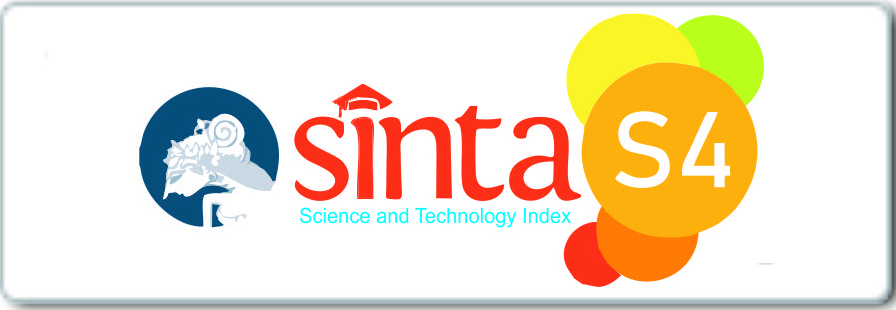Keanekaragaman Serangga di Perkebunan Kakao Desa Kawalo Kecamatan Taliabu Barat Kabupaten Pulau Taliabu
DOI:
https://doi.org/10.32529/jbb.v2i1.2041Keywords:
Cocoa Plantation, Diversity, Insects, TaliabuAbstract
Abstract: Cocoa is biodiversity that must be preserved. In addition, cocoa is one of the main pillars of the plantation area which plays an important role in the community's economy. Meanwhile, insects are part of biodiversity with the ultimate goal of increasing cocoa productivity. Insects are organisms that harm plants, especially cocoa. The purpose of this research is to determine the types of insects found in the Cocoa Plantation of Kawalo Village, West Taliabu District, Taliabu Island Regency. The type of research used is descriptive quantitative. This research was conducted in June-July 2022 By using a purposive sampling method or deliberately determining as many as 9 points with an area of 1 Ha with the sampling technique using the Yellow trap method. Based on the results of research from 9 traps conducted in Kawalo Village, Taliabu Barat District, Taliabu Island Regency, it found that 49 individuals from 11 insect species, including Amata aperta, Bactrocera dorsalis, Colletidae, Euagoras plagiatus, Herpetogramma licarsisalis, Megachile plut, Nisotra bicolorata, Oechopila smaragdina, Riptortus linearis, Sphaeroderma testaceum, Telostylinus lineolatus. Insect Diversity Index found results using the Shannon-Wienner Index, namely the variety of H' (1.78611) in the medium category. It's because the location of the Kawalo Village Cocoa Plantation is visited by the community almost every day, and those who visit the cocoa plantation often do pruning of the cocoa tree which causes disturbance to insect activity. On environmental factors obtained in the morning taken at 08.00 WITA with temperature (29.2), humidity (60%) in the afternoon taken at 17.00 WITA with temperature (30.00), humidity (61%).
References
Amirullah, A., Bakkaraeng, S. W. A., & Afdaliana, D. 2018. Keanekaragaman Serangga Polinator di Perkebunan Kakao (Theobroma cacao L.) Desa Puudongi Kecamatan Kolono Bio Wallacea. Jurnal Penelitian Biologi. Vol. 5(1).
Anggo, S., Karim, W. A., Samaduri, A., & Erni, N. (2022). Keanekaragaman Jenis Kupu-Kupu Dikawasan Hutan Batu Tikar Kecamatan Luwuk Kabupaten BanggaI. Jurnal Biologi Babasal, 1(2).
Anggo, S., Muzain, D., Karim, W. A., & Lige, F. N. (2022). Keanekaragaman Serangga Hama Pada Kawasan Agrowisata Universitas Muhammadiyah Luwuk Desa Lontos Kecamatan Luwuk Timur Kabupaten Banggai. Jurnal Biologi Babasal, 1(2).
Ayu, L. A., Nasirudin, M., & Wardhani, Y. 2020. Keanekaragaman Serangga di Perkebunan Kopi Excelsa Desa Panglungan Kabupaten Jombang. Agrosaintifika. Jurnal Ilmu Ilmu Pertanian. Vol. 3(1): 163–168.
Astari, I., Sitepu, S. F., & Girsang, S. S. 2019. Keanekaragaman Serangga Pada Tanaman Bawang Merah (Allium ascalonicum Linn) Dengan Budidaya Secara Semi Organik dan Konvensional di Kabupaten Simalungun: Diversity Of Insects On Shallot Crops (Allium Ascalonicum Linn) With Semi Organic And Conventional Farming System In Simalungun District. Jurnal Online Agroekoteknologi. Vol. 7(2): 390-399.
Danial, A. 2017. Keanekaragaman Serangga Predator pada Perkebunan Kelapa Sawit di Lahan Bukaan Baru dan Bukaan Lama. Jurnal Proteksi Tanaman Journal of Plant Protection. Vol. 1(27).
Haruna, M. F., Kenta, A. M., & Herawati, H. (2022). Medicinal plants used by the community of Lipulalongo Village, Banggai Laut District, Central Sulawesi, Indonesia. Asian Journal of Ethnobiology, 5(1).
Lige, F. N., Anggo, S., Karim, W. A., & Samak, N. (2022). Keanekaragaman Serangga Permukaan Air di Sungai Batu Gong Desa Tataba Kecamatan Buko Kabupaten Banggai Kepulauan. Jurnal Biologi Babasal, 1(2).
Lige, F. N., Lihawa, F., & Karim, W. A. (2022). Analisis Pewilayahan Komoditi Pertanian Berbasis Produksi di Kabupaten Banggai. Bioscientist: Jurnal Ilmiah Biologi, 10(1), 391-399.
Ikbal, M., Putra, N., & Martono, E. 2014. Keragaman Semut pada Ekosistem Tanaman Kakao di Desa Banjaroya Kecamatan Kalibawang. Yogyakarta. Jurnal Pe rlindungan Tanaman Indonesia. Vol. 18(2): 79-88.
Karim, W. A., Nurlia, N., Ndolan, Y., & Samaduri, A. (2022). Inventarisasi Tumbuhan Paku (Pterydophyta) Di hutan Batu Tikar Kecamatan Luwuk Kabupaten Banggai. Jurnal Biologi Babasal, 1(1).
Latip, D., Pasaru, F., & Hasriyanti. 2015. Keanekaragaman Serangga pada Perkebunan Kakao (Theobroma Cacao L.) yang Diaplikasi Insektisida dan Tanpa Insektisida. Jurnal Agrotekbis. Vol. 3(2): 133–140.
Maesaroh. S., Dewi. Tustiyani dan Mutakin. 2018. Keberadaan dan Keanekaragaman Serangga pada Tanaman Jeruk Siam. Jurnal Pertanian. Vol. 9(2): 113-119.
Putra, P. 2011. Inventarisasi Serangga pada Perkebunan Kakao (Theobroma Cacao) Laboratorium Unit Perlindungan Tanaman Desa Bedulu, Kecamatan Blahbatuh, Kabupaten Gianyar Bali. Jurnal Biologi. Vol. 14(1).
Wachidatul, L. Y., Nurul, D. K., & Muhammad, C. A. 2020. Pengembangan Ensiklopedia Serangga pada Perkebunan Kakao (Theobroma Cacao) Organik dan Anorganik di Desa Cermo, Kecamatan Kare. Kabupaten Madiun. Universitas PGRI Madiun. In Prosiding Seminar Nasional Simbiosis V. p-ISSN : 9772599121008.
Yuliani, Y., Kamal, S., & Hanim, N. 2018. Keanekaragaman Serangga Permukaan Tanah pada Beberapa Tipe Habitat di Lawe Cimanok Kecamatan Kluet Timur Kabupaten Aceh Selatan. Prosiding Biotik. Vol. 5(1)
Downloads
Published
How to Cite
Issue
Section
License
Copyright (c) 2023 Jurnal Biologi Babasal

This work is licensed under a Creative Commons Attribution-NonCommercial 4.0 International License.
Authors are able to enter into separate, additional contractual arrangements for the non-exclusive distribution of the journal's published version of the work (e.g., post it to an institutional repository or publish it in a book), with an acknowledgement of its initial publication in this journal.
Authors are permitted and encouraged to post their work online (e.g., in institutional repositories or on their website) prior to and during the submission process, as it can lead to productive exchanges, as well as earlier and greater citation of published work














